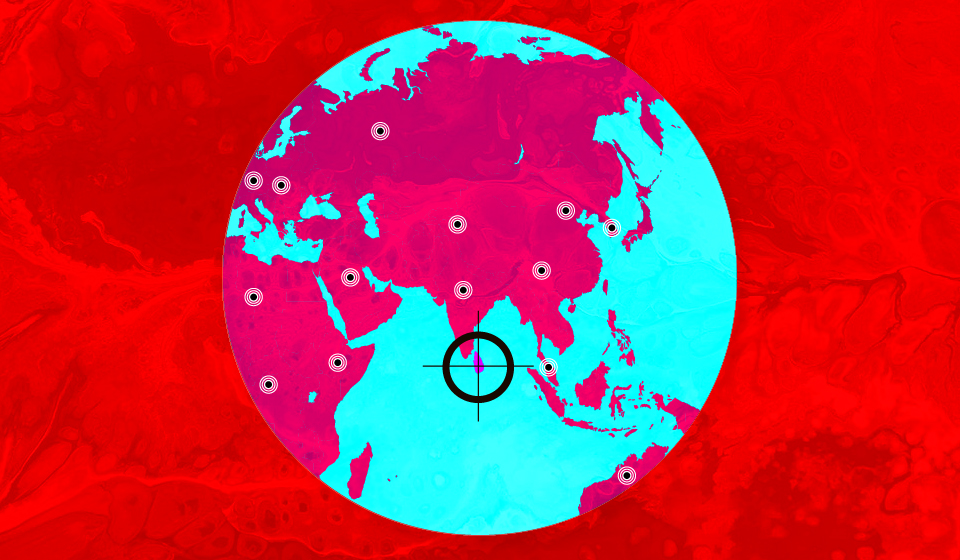
Sri Lanka: When 'hurt' is globalised, revenge crosses borders

The scale, spread, and intensity of the terror attacks in Sri Lanka, which have left more than 300 dead and many more injured, has been marked with a ruthlessness and elaborate organisation rarely seen in today’s conflict-hit world.
The motive behind the attacks is mystifying, especially since no one has formally claimed responsibility for the attacks. And, the other question: why Sri Lanka? While Sri Lanka’s security forces and the intelligence infrastructure are undoubtedly straining every nerve to nab the perpetrators and get to the heart of the attacks, what is shocking is that the attackers were able to carry out their plans without any obstacles.
Looking at the targets and nature of the attacks, certain inescapable conclusions present themselves. For one, the choice of churches on Easter Sunday is an indication that it was aimed, among others, at the Christian community. Comprising only around eight percent of the population, the Christians as a religious entity was overshadowed by its members who identified themselves as either Tamil or Sinhala. In effect, as a religious domination, their role was marginal, if at all. So why would they be targeted?
Clues
In today’s globalised world, it is necessary to look elsewhere for any clues to the attack. And an immediate possibility is the Christchurch attacks on March 15 this year by a ‘lone wolf’ Brenton Tarrant, a white, supremacist, right wing Christian who gunned down worshippers at two mosques killing 50 people.
The question is whether the Sri Lanka attacks were a revenge killing by a radical Islamist group. While there has been little publicly documented activities of the al-Qaeda or the Islamic State in Sri Lanka, it is possible that a local group linked to either may have mounted the attacks, as some reports suggest. Health Minister Rajitha Senaratne said they had received warnings of a possible attack a few days ago from a little-known group called the National Thawheed Jamaat. An AFP report said the suicide bomber at Sri Lanka’s Cinnamon Grand hotel had registered himself as Mohamed Azzam Mohamed.
LTTE hand?
The other speculation is whether the LTTE which was all but decimated in 2009 was behind the attack. But, from all accounts, since the end of the internal conflict, the LTTE has disintegrated and the Tamil population in the north and east has come under severe scrutiny, loss of freedom and a number of arrests of anyone even remotely suspected to be part of the Tamil liberation movement. So the Tamil group’s involvement looks highly improbable.
The attacks, according to some reports, could have only been carried out by an organisation endowed with funds, network and the armed capability, all of which rule out the LTTE. Further, even during the time of the civil war the LTTE generally targeted Sinhala politicians, officials and the Lankan army besides state institutions, but not the kind that was seen on Easter Sunday which seem to have been aimed only at innocent civilians.
Question may be asked, with reference to the revenge theory, as to why Sri Lanka was the target when it remained peaceful, largely out of sight of the world’s attention and there has been no attacks or anything remotely threatening any religious community. But the reason for choosing Sri Lanka, in the modern-day world, need not necessarily follow this logic.
For, if the Christchurch attacks are considered, what did the Muslim worshippers in New Zealand have to do with conflicts elsewhere, say, the Middle-East where minority Christians, among others, were targeted by the Islamic State during its temporary rule in parts of Iraq. Yet, the attacker chose New Zealand.
Earlier, in 2011, another lone white attacker in Norway, Anders Behring Breivik, killed 77 civilians of which 69 were members of Norway’s Workers Youth League, a secular, Left-leaning youth group. Breivik chose the target for their belief in secularism and for being accommodative of Muslim migrants who were arriving in Europe seeking refuge following widespread conflict in the Middle-East.
In the case of Sri Lanka, the country has largely remained free of any large-scale conflict for close to a decade. Hitting at unexpected targets probably is easier due to the element of surprise and a ‘sitting duck’ security situation. This happened in Christchurch as well.
If it is indeed revenge being played out at a global level, the only difference is that on the one side there is a lone wolf phenomenon backed by ideological difference and communal hatred while the other side is far more organised and capable of an exponential response backed by an equally sordid mindset.
The worrying element of Lanka’s Easter Sunday attack is that, if no group ever claims responsibility and it is not clear why the bombings happened, it would mean a new phase in terror attacks. For, though the word ‘terror’ is used randomly and everywhere in today’s discourse to mean all kinds of political killings, the attack in Sri Lanka is a classic case of a ‘terror’ attack, where the motives and the group remain shrouded in mystery while the incident serves to terrorise the population.
The real hope is that the security forces fish out the perpetrators as only that will enable governments around the world to be better prepared to deal with such groups and for any such eventuality.


